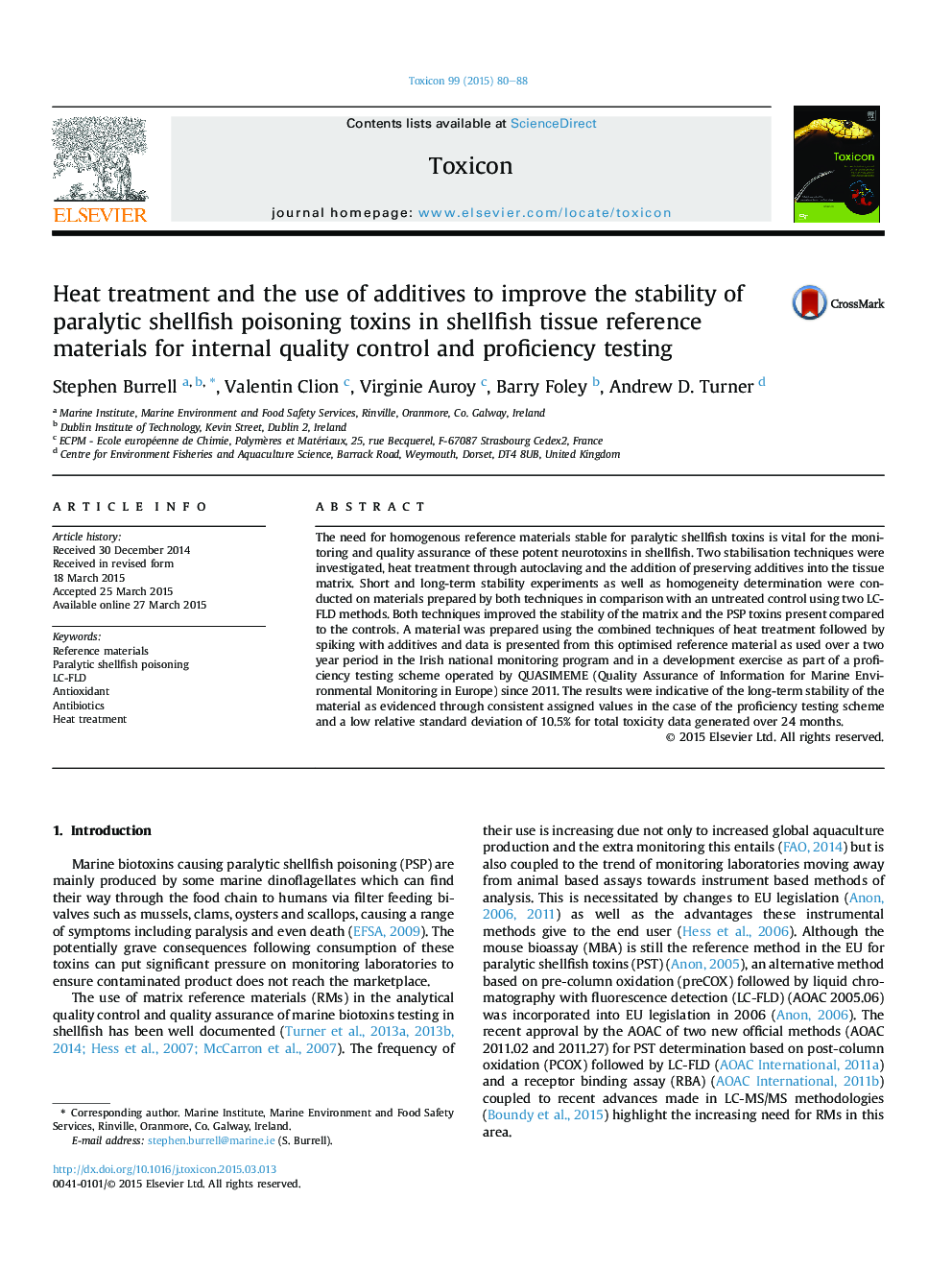| Article ID | Journal | Published Year | Pages | File Type |
|---|---|---|---|---|
| 8395594 | Toxicon | 2015 | 9 Pages |
Abstract
The need for homogenous reference materials stable for paralytic shellfish toxins is vital for the monitoring and quality assurance of these potent neurotoxins in shellfish. Two stabilisation techniques were investigated, heat treatment through autoclaving and the addition of preserving additives into the tissue matrix. Short and long-term stability experiments as well as homogeneity determination were conducted on materials prepared by both techniques in comparison with an untreated control using two LC-FLD methods. Both techniques improved the stability of the matrix and the PSP toxins present compared to the controls. A material was prepared using the combined techniques of heat treatment followed by spiking with additives and data is presented from this optimised reference material as used over a two year period in the Irish national monitoring program and in a development exercise as part of a proficiency testing scheme operated by QUASIMEME (Quality Assurance of Information for Marine Environmental Monitoring in Europe) since 2011. The results were indicative of the long-term stability of the material as evidenced through consistent assigned values in the case of the proficiency testing scheme and a low relative standard deviation of 10.5% for total toxicity data generated over 24 months.
Related Topics
Life Sciences
Biochemistry, Genetics and Molecular Biology
Biochemistry, Genetics and Molecular Biology (General)
Authors
Stephen Burrell, Valentin Clion, Virginie Auroy, Barry Foley, Andrew D. Turner,
